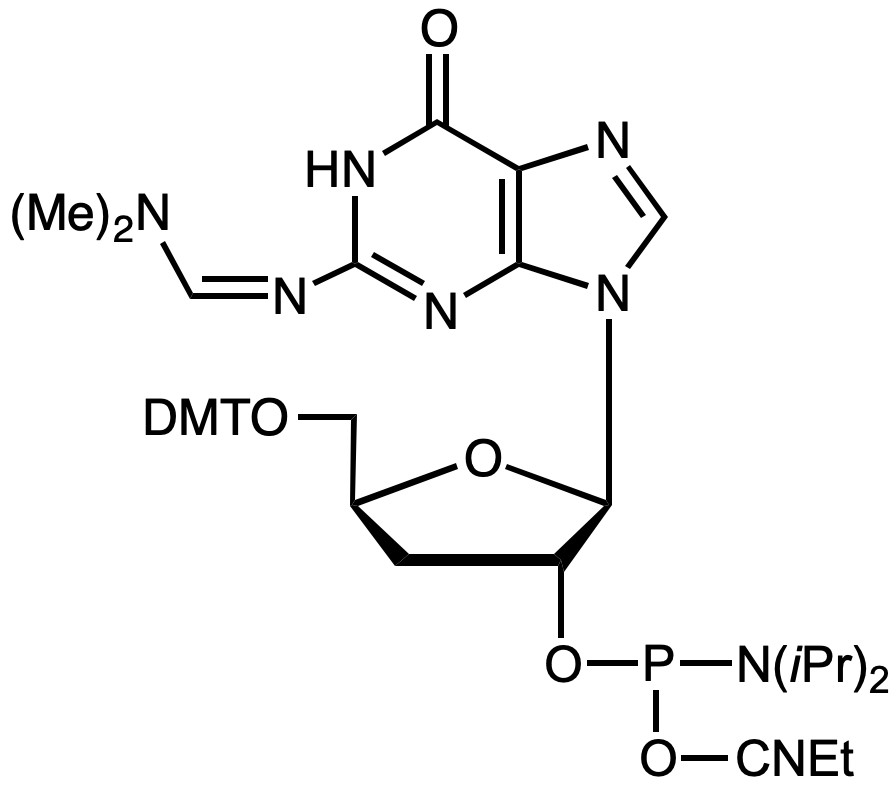
Catalog Number: 10-1074-xx
Description: 3'-dG-CE Phosphoramidite
5'-Dimethoxytrityl-N-dimethylformamidine-3'-deoxyGuanosine,
2'-[(2-cyanoethyl)-(N,N-diisopropyl)]-phosphoramidite |
| Formula: C43H53N8O7P |
M.W.: 824.92 |
F.W.: 329.21 |
Diluent: Anhydrous Acetonitrile |
| Coupling: No changes needed from standard method recommended by synthesizer manufacturer. |
| Deprotection: No changes needed from standard method recommended by synthesizer manufacturer. |
| Storage: Refrigerated storage, maximum of 2-8°C, dry |
| Stability in Solution: 24 hours |
2’-5’ Linked Oligonucleotides
Cellular DNA and RNA are made up of ribo- and 2’-deoxyribonucleic acids linked together via 3’-5’ phosphodiester linkages and by far comprise the bulk of polynucleic acids found in cells. Much less common are oligonucleotides which have 2’-5’ linkages. However, a unique feature of 2’-5’ linked oligonucleotides is their ability to bind selectively to complementary RNA. These features suggest a number of interesting uses for 2’-5’ linked oligos such as their use as RNA specific probes or in antisense oligos. Recently, oligos have been synthesized using 3’-deoxy-2’-phosphoramidites and 2’-deoxy-3’-phosphoramidites to produce chimeras with 2’-5’ linked ends and 3’-5’ linked central regions. It was found that 2’-5’ phosphorothioate oligos: 1) bind selectively to complementary RNA with the same affinity as phosphodiester oligos; 2) exhibit much nonspecific binding to cellular proteins; 3) do not activate RNase H. A 3’-deoxynucleoside at the 3’-terminus of an otherwise normal oligonucleotide effectively blocks polymerase extension.
If you cannot find the answer to your problem then please contact us or telephone +44 (0)1954 210 200